
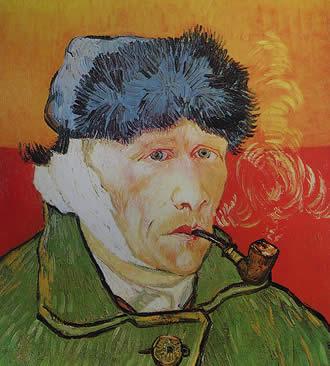
There are no Van Goghs in Provence, even though the much loved redhead painted 350 works during the months that he spent in Arles and Saint-Remy de Provence in his mad quest for the "yellow sun". What has remained are the places and landscapes that he painted.
"May artists come together in Arles" was Van Gogh's wish. Attracted by the unique light of Provence, the artist created here his most beautiful paintings. Experience them for yourself as you follow the footsteps of a tormented painted fascinated by colour.
At the start of 1888, Vincent Van Gogh left Paris for Arles in search of the light of the Midi vaunted by Toulouse-Lautrec, convinced that it resembled that of the Japanese prints that he admired so much. "I believe that the whole future of new art can be found in the Midi" he wrote at the time to his brother. In addition to the intense azure of the sky and the air of an absolute clarity, the painter's gaze got drunk on the flowering fruit trees, the oleander, the violet earth, the silver of the olive trees, the dark green of the cypress. It was the colours that marked him, more than the architectural beauty left by the Romans throughout the city or the remains of a rich Gothic era.
A feverish inspiration, as intense as the light, impelled him to execute hundreds of drawings and paintings during his fifteen-month stay in Arles, some of them becoming his most renowned works. The temptation is too great to resist following in his footsteps to the places that made him, as much as the city, famous.
Even if some of the places have disappeared, panels indicate the spot where Van Gogh set up his easel. On the Place du Forum in Arles, you will find the Café le soir, a glowing pool of yellow inevitably catching the eye, and not far away, the Arena. On the banks of the Rhône, you will recognize the stairs of the Trinquetaille Bridge and, when evening comes, the Starry Night. Unfortunately bombed in 1944, the yellow house where Vincent Van Gogh stayed sat on Place Lamartine. His bedroom there has been recreated in a memorial building at the Rond-point des Arènes traffic circle. Then, the Old Moulin, Rue Mireille, the public gardens, Boulevard des Lices, the magnificent garden at the nursing home where Van Gogh was admitted after cutting off his ear, and which today is a library. And to end this tribute tour, on the outskirts of the city, the famous Alyscamps, an avenue of Roman graves, which Gauguin also came to paint by his friend's side, a still existing motif, like the Langlois Bridge with the washerwomen.
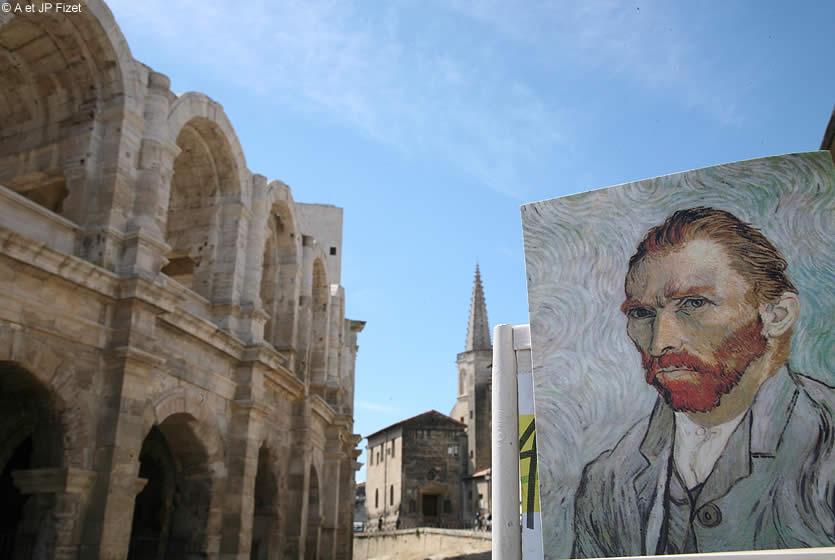
The arenas of Arles
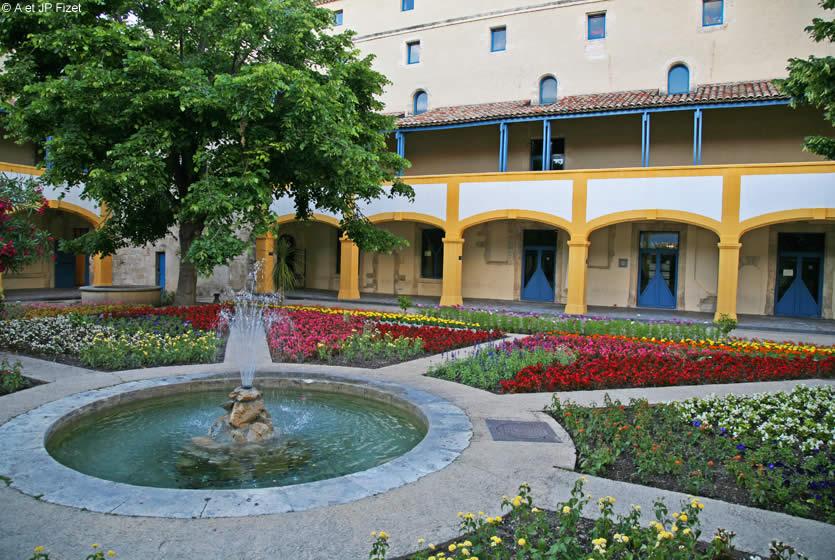
Espace Van Gogh in Arles
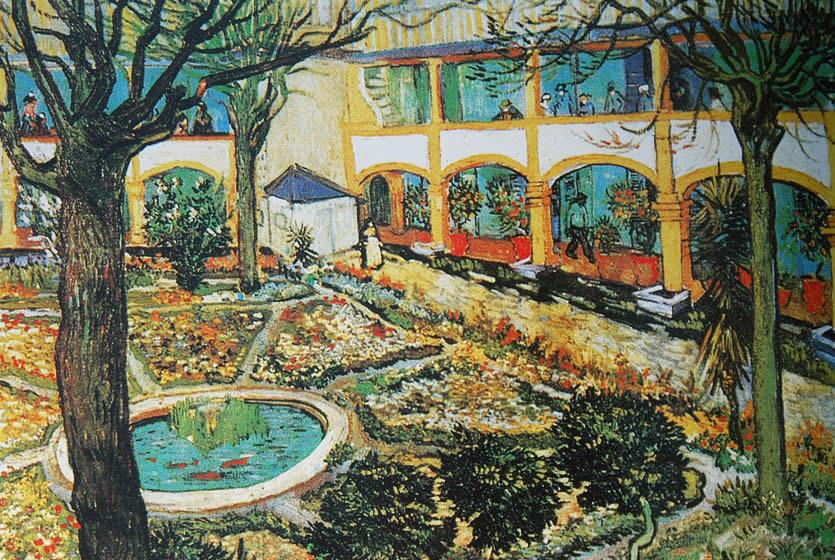
Van Gogh, the garden of the Arles Sanatorium, Winterthur, Oskar Reinhart collection
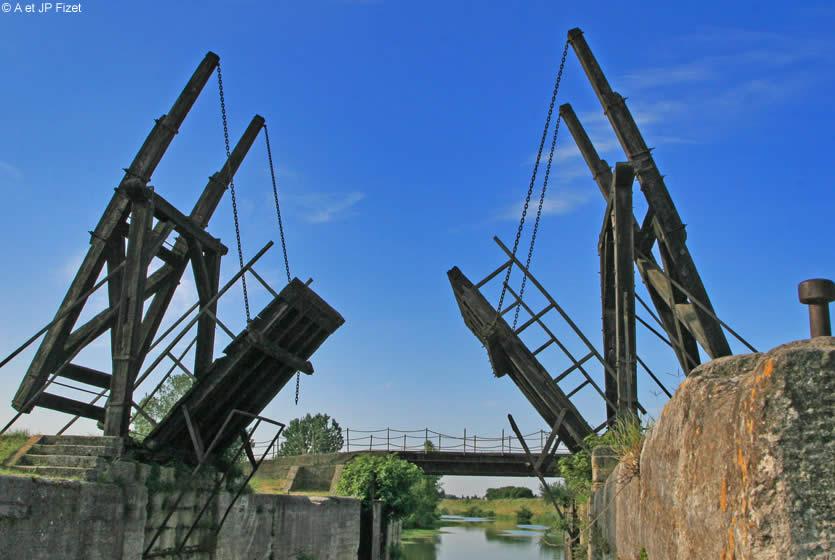
The Langlois bridge in Arles
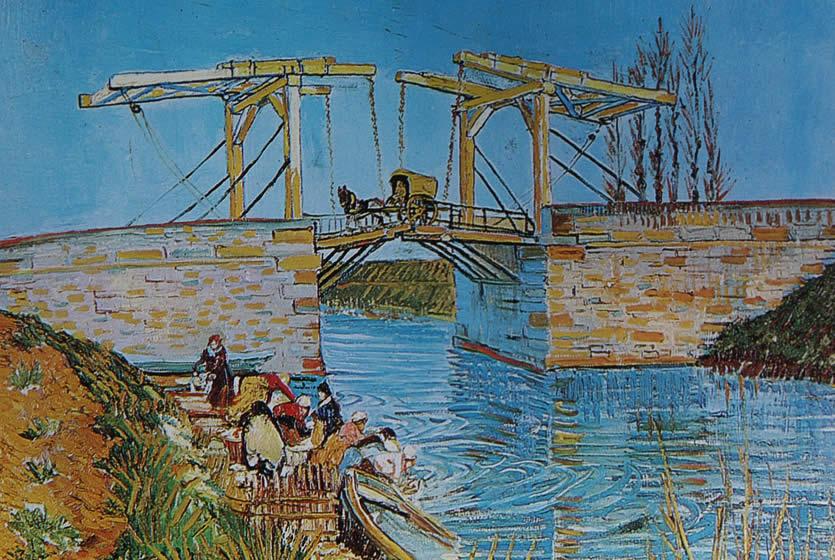
Van Gogh, The Drawbridge, Rijksmuseum, Kröller-Müller, Otterlo
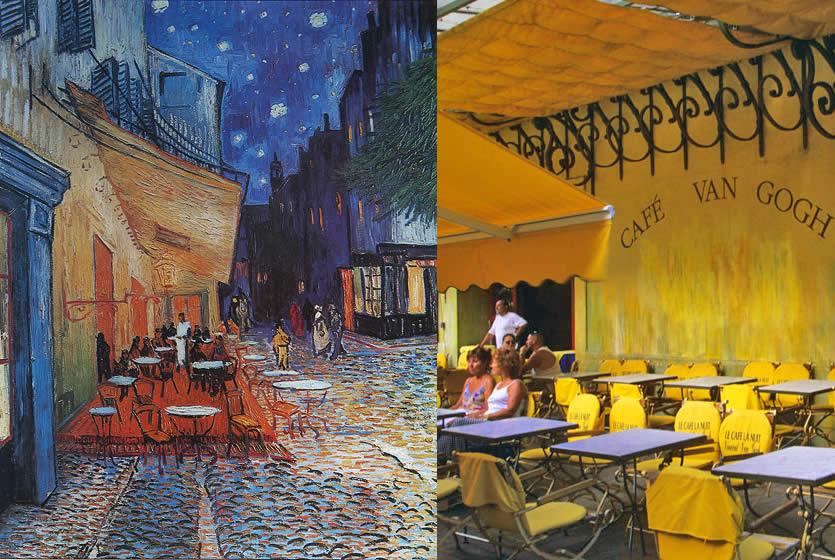
Café Van Gogh, Place du forum, Arles
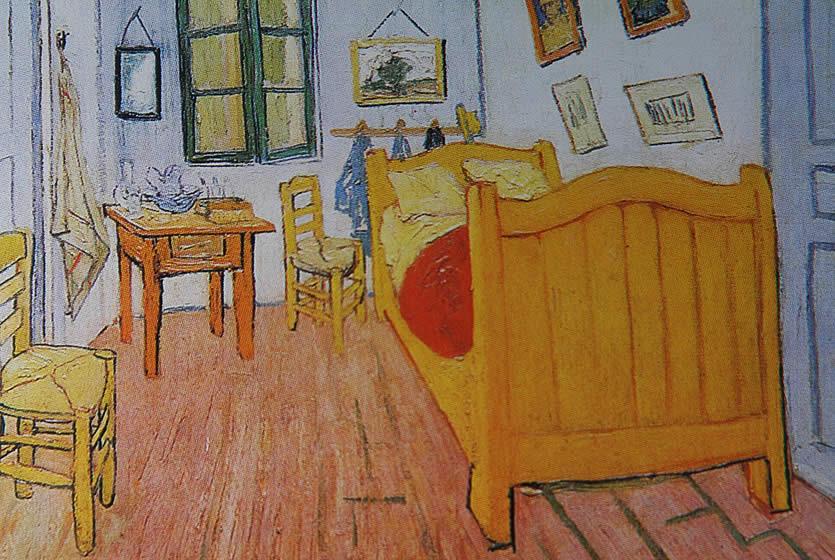
Van Gogh, The Bedroom at Arles, 1889, Rijksmuseum Vincent Van Gogh
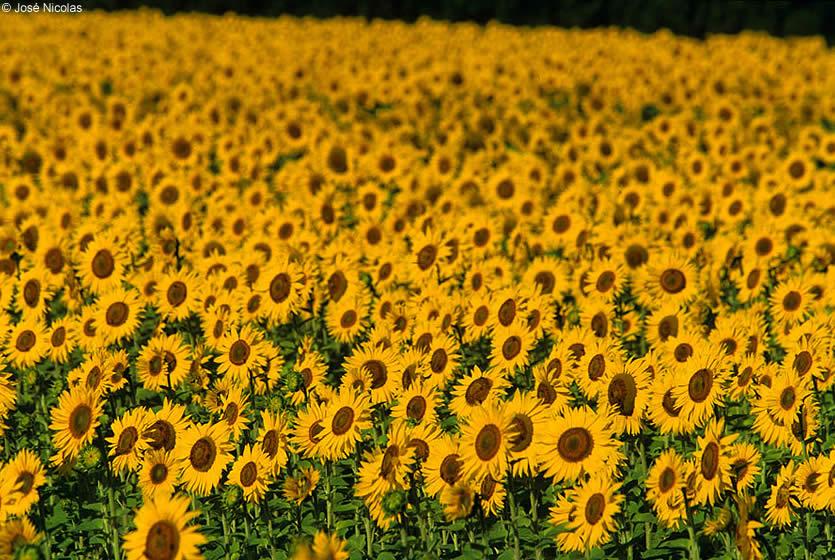
Field of sunflowers in Arles
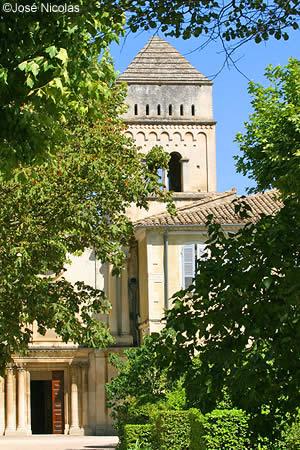
Van Gogh's stay in Arles incontestably made of him a giant in art whose exalted genius shattered all conventions.
Leaving the colours to radiate from his paintings, the devastated artist felt desperately alone following the abrupt departure of Paul Gauguin. Vincent suffered a breakdown. At the end of alternating periods of treatment, remission and relapses, he was admitted to the asylum in St Rémy de Provence, where he again took up painting. He would live for just one more year.
Once again fascinated by the the power of the landscapes and the ardent light of the Alpilles, Van Gogh provides a new measure of his talent through the one hundred and fifty paintings and drawings he made here. Amongst them are the priceless Irises, the Road with Cypress and the Wheat Fields in which we recognize his use of impasto, his whirling brushstrokes and the vigour of his compositions.
For those who want to enter his world, a walking circuit punctuated by twenty, very well-made explicative panels movingly guides the art lover in the footsteps of this unique Impressionist artist.
Follow it unhurriedly and, through the reality of the marvellous landscapes, begin to feel the sensitivity of an exceptional man who, in his art, has recreated the beauty of places fashioned by humble farmers since Antiquity.
Emotions peak at the Saint-Paul-de-Mausole hospital where Van Gogh spent several months before dying in Auvers. The profound serenity of the cloisters seems to hold all the secrets of his splendid yet tormented art.
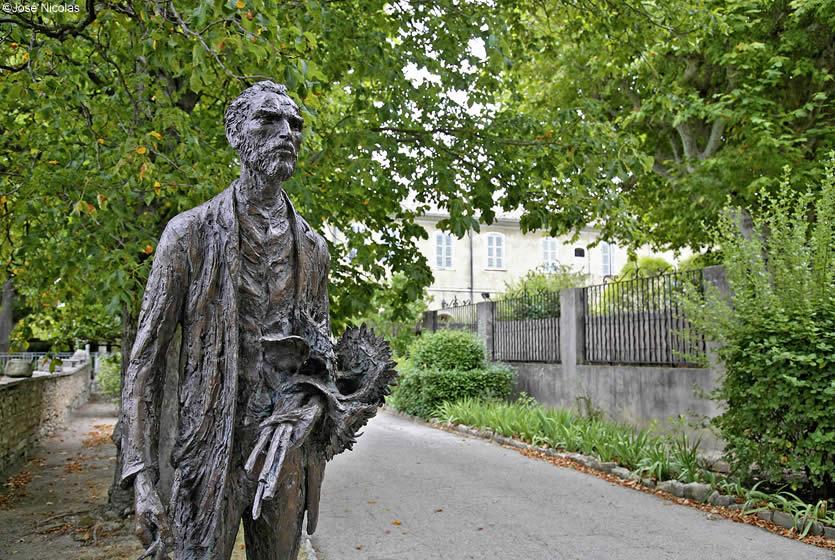
Statue of Vincent Van Gogh in the Monastery's garden
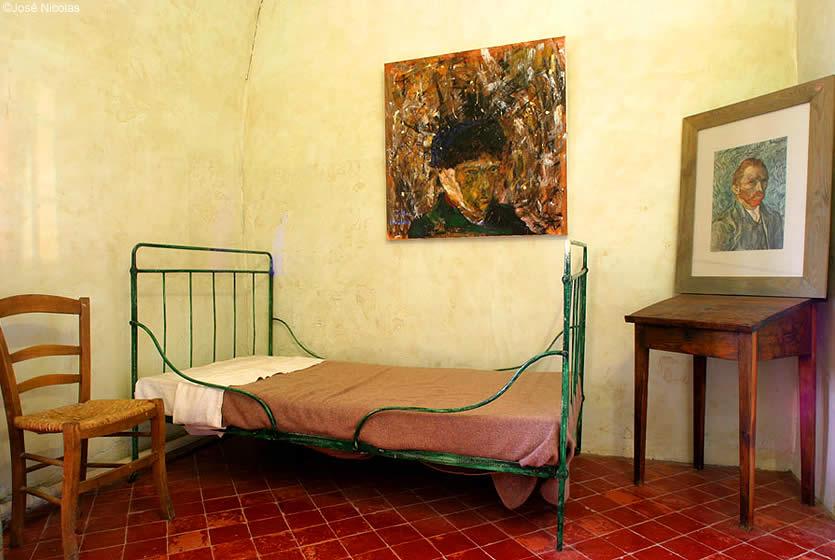
Reconstitution of Van Gogh's bedroom in the Monastery
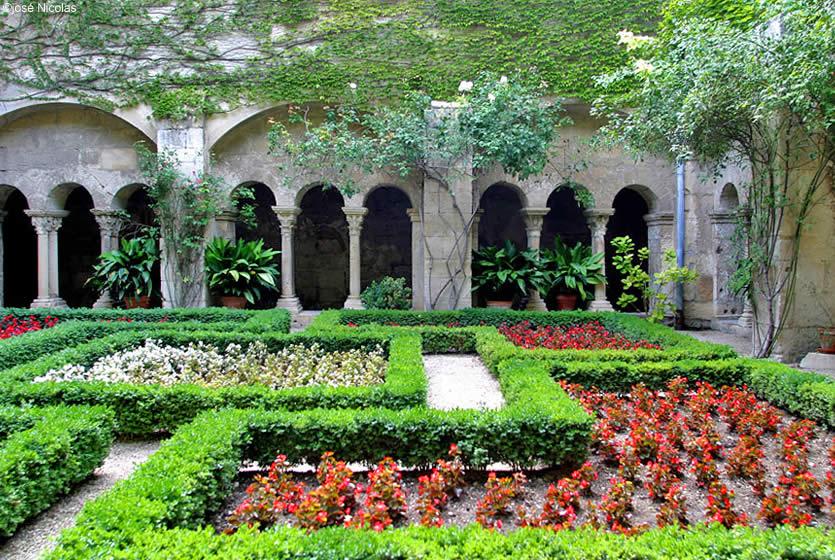
Romanesque cloister of Saint-Paul de Mausolé in Saint Rémy de Provence
Where to sleep?